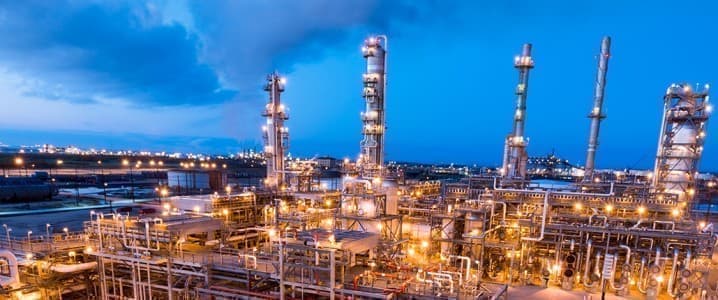The 2nd wave of COVID-19/20 becoming an irreversible part of our reality, the global downstream sector has started to assess the damage done so far and the potential detriment that is still up there for refiners that are struggling to remain profitable. According to IEA estimates, it will take at least 2 years until the refining sector recovers fully from the ramifications of the current demand loss. With refinery utilization rates expected to drop to an annual average of 72% this year and 77% in 2021, the lowest since 1983, it should come as no surprise that some downstream firms are considering closing down altogether. New Zealand might not be a refining giant when compared to Asian downstream powerhouses, yet a potential closure would most probably leave a significant impact across Asia and Oceania.
The closure of Marsden Point would not be a novelty for the Asia Pacific Region. Shell has already announced the definitive closure of the 110kbpd Tabangao Refinery in the Philippines after 60 years of continuous operation. Shell would still have another plant operating in the East Asian country, still the sudden COVID-induced closure (the refinery stopped refining in May and was halted for good thereafter) goes on to demonstrate the overall decreased profitability of refining in the region. Asia seems to be confronting its “Europe moment” when excessive refining capacity engenders the closure of the least profitable assets. Tabangao would be gradually converted into a fuel import terminal, paving a way forward for other refineries, too. Rumours have been circulating that some Australian and Japanese refineries are also considering their options.
Where does all this leave New Zealand? Since May-June 2020 the 135kbpd Marsden Point Refinery was reported to consider transforming the plant into a storage terminal that would serve as a distribution hub for imported products. The decision is far from being finalized as many shareholders have not had their say on the refinery’s future. The main shareholders did indicate their strategic intentions though, tilting heavily towards the closure option. The largest shareholder ExxonMobil (owns 17.2%) continues to “assess the closures’s implications for its business”, the second-largest Z Energy (15.36%) has publicly and unequivocally advocated for the transformation of Marsden Point whilst the third-largest shareholder BP voiced its “support” for the refinery’s strategic review of operations.
Whilst New Zealand political scene has been replete with deliberations on the timeliness and social consequences (some 1100 jobs lost) of a potential Marsden Point closure, the refinery itself was compelled to minimize its output and operational exposure vis-à-vis the coronavirus pandemics. In COVID-19 times New Zealand has cut down massively on its refining in general, with demand waning as early as March/April the worst came in July 2020 which has seen no crude imports whatsoever, for the first time in this millennium. In fact, the last time when New Zealand bought no crude on a monthly basis was in August 1986. It has to be pointed out that were Marsden Point to be decommissioned, the infrastructure connecting the refinery to the North Island’s main consumption hubs remain intact, such as the 104-mile Refinery-Auckland Pipeline (RAP). Related: U.S. Oil Exports Continue To Decline
Graph 1. New Zealand’s Crude Imports in 2017-2020 (‘000 barrels per day).

Source: Thomson Reuters.
Although New Zealand also imports products as the Marsden Point Refinery is not producing enough to cover the nation’s needs (40% of its gasoline and some 30% of its Diesel are imported from elsewhere), shutting down the nation’s only oil-refining asset might render it politically and economically vulnerable. Hence, there are also other alternative way that might apply to the refinery’s future – the company’s top management flaunted the idea of simply improving the firm’s refining economics and altering its current business model, without any damage done or constraints stipulated to its assets. Yet judging by todays’ utterances, the stakeholders would rather scrap it whilst it still generates some money, so as not to invest in unnecessary equipment upgrades that would never be requited financially.
New Zealand’s upstream segment would not suffer that much from closing down the nation’s sole refinery. Producing some 140kbpd of crude oil and condensate, with the Pohokura and Maari fields providing almost half of the total output, New Zealand’s light and sweet grades have traditionally been exported to Australia. Were New Zealand to quit the downstream industry altogether, the main sufferers in terms of lost market outlets would be Middle Eastern producers – the Emirati Murban has been the all-time favorite, with at least one Aframax cargo arrival per month (see Graph 1). Such preference stems from the fact that since its inception Marsden Point was configured to refine medium sour crudes and not the light domestic types.
If the fate of Australia is anything to go by, the future for New Zealand refining is dire. Australia has had 4 out of its initial 8 refineries closed in the past 11 years and doubts remain over the long-term viability of Caltex Australia’s 109kbpd Lytton Refinery. The decommissioned refineries in Adelaide and Sydney, Brisbane and potentially Marsden Point have a similar historical course. At first low margins have disbalanced their financial stature and then giant East Asian refineries have simply steamrolled them thanks to a combination of implicit government subsidies and other sweeteners. In 2019 Marsden Point was still profitable, despite generating a mere $4.2 million of annual net profit, however this year’s numbers are going to be lamentable. The market knows this - dropping to $0.6 per share, Refining NZ’s stock shares have lost two-thirds of their value when compared to January 2020.
By Viktor Katona for Oilprice.com
More Top Reads From Oilprice.com:
- The Debt Crisis Is Mounting For Oil Economies
- Shell May Cut Upstream Oil Operations By 40%
- Natural Gas Prices Explode On Stronger Demand


















